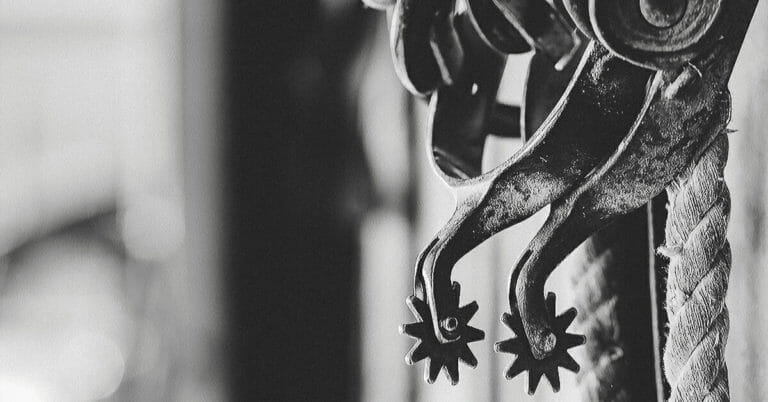By Shanee Edwards · February 13, 2018

You may know Martin McDonagh’s previous films Seven Psychopaths or In Bruges. Both are far from typical Hollywood fare, as both push the boundaries of three-act structure and storytelling in general. McDonagh’s film, Three Billboards Outside Ebbing, Missouri, follows his rebellious style and has been nominated for several Academy Awards. Watching the film, it’s clear the movie is a modern-day Western. But – believe it or not – McDonagh says it wasn’t his idea to make a genre film.
In the movie, Mildred (Frances McDormand), is at her wits’ end. Her daughter was brutally murdered and police chief Willoughby (Woody Harrelson) has yet to find any suspects over a year later. Desperate, Mildred rents three billboards at the edge of town to call out Willoughby by name and ask why nothing’s been done. It is an attempt to hold his feet to the fire.
Like any good Western, the story begins with a violation of law and order. In this case the murder of an innocent girl. Enter her mother, Mildred, a lone heroine fighting for justice.
McDonagh, a Brit, admits the film functions as a Western but says he didn’t start out with that idea in mind.
“In terms of a Western,” says McDonagh, “it’s a one street town and in some ways, Frances’ character strides in to take care of the bad guys. But of course, it’s not as simplistic as that. To be honest, I think it was Frances who saw it as more of a Western – at least to a greater degree than I did.”
Stage and film actress McDormand is a master at creating strong female characters. In some ways, her performance as Marge Gunderson in Fargo prepared her for Mildred, though Mildred is really the shadow version of Marge, considering just how rageful she is. Come hell or high water, Mildred is determined to get justice. The actress even decided to employ some physical traits of one of Hollywood’s most famous cowboys.
“Frances based some degree of Mildred on John Wayne – his walk and his kind of cowboy attitude.”
Watching the film, the Western elements start off subtle – that is until you hear the music.
“I think when Carter Burwell [who scored the film] saw those aspects of the story he kind of added this Spaghetti Western-like themed music for her, which, as soon as he played it for me, I thought it was beautiful. So I think those two elements added to the Western feel of the story but they really had nothing to do with me.”
While McDonagh’s last two films focused primarily on male protagonists, he was specifically inspired by McDormand.
“It was written for her – I don’t know anyone who has as much integrity as Frances does. It had to be an actress who was strong and totally single-minded, determined, and someone who just doesn’t give the usual shit about the business or any of those things. She was someone who, in a story like this, you believed she wouldn’t back down.”
For McDonagh, the experience of writing the character Mildred was also incredibly liberating.
“It was a lot more exciting, to be honest, but it wasn’t just that she was a female protagonist, but that she was an outrageous, strong and determined woman. There was something almost freeing about writing a female character that was so strong at the heart of the film. Much more than it would be if I were writing a guy because I think from the outset, anyone who would put up three billboards that sent such a strong message, and coming from a place of such a raging anger, you almost know what the character is like before you even hear her talk.”
For McDonagh, character is everything – the beginning and the end in every way.
“Sending a character like that out into the story was exciting. I never plot out the films before I’ve written them. For me, it’s pretty much a character study that evolves organically. I honestly didn’t know what Mildred would do from one scene to the next, which makes it exciting for me and makes it exciting for the audience.”
“No, I never write an outline. I spend a lot of time thinking about the characters. I love to be surprised by how each scene extrapolates and what each scene gives us. For instance, I didn’t know what was going to happen to Woody’s character before that scene happened.”
Without giving too much away, there is a big twist in Harrelson’s character arc. He’s a family man, dying from pancreatic cancer and though he inhabits the role of antagonist, his turn is pretty shocking.
But that’s what keeps McDonagh’s films exciting – eschewing expected outcomes and embracing the chaos. He’s a writer who follows his instinct alone.
 Shanee Edwards graduated from UCLA Film School with an MFA in Screenwriting and is currently the film critic for SheKnows.com. She recently won the Next MacGyver television writing competition to create a TV show about a female engineer. Her pilot, Ada and the Machine, is currently in development with America Ferrera’s Take Fountain Productions. You can follow her on Twitter: @ShaneeEdwards
Shanee Edwards graduated from UCLA Film School with an MFA in Screenwriting and is currently the film critic for SheKnows.com. She recently won the Next MacGyver television writing competition to create a TV show about a female engineer. Her pilot, Ada and the Machine, is currently in development with America Ferrera’s Take Fountain Productions. You can follow her on Twitter: @ShaneeEdwards
For all the latest from The Script Lab, be sure to follow us on Twitter, Facebook, and Instagram.